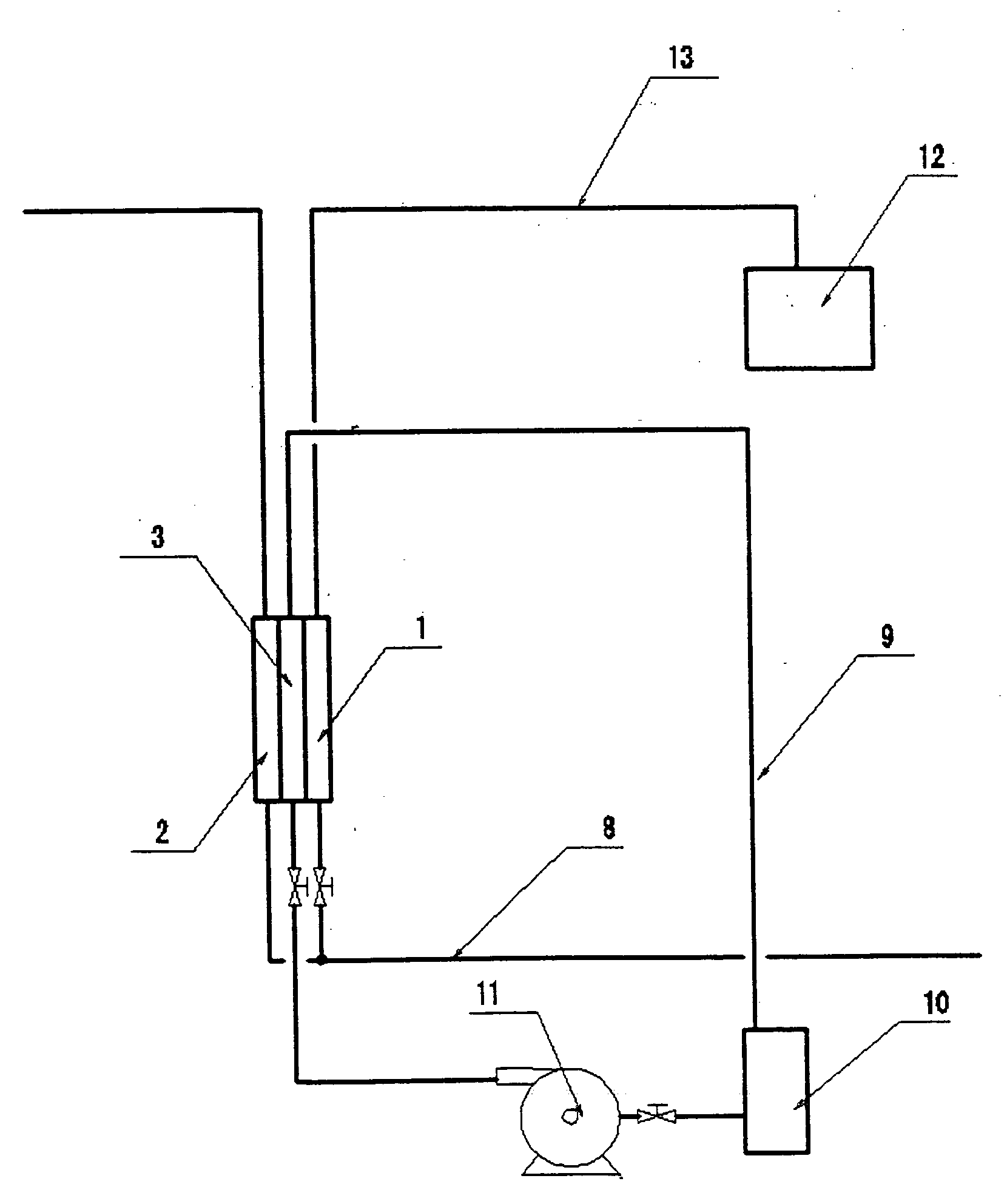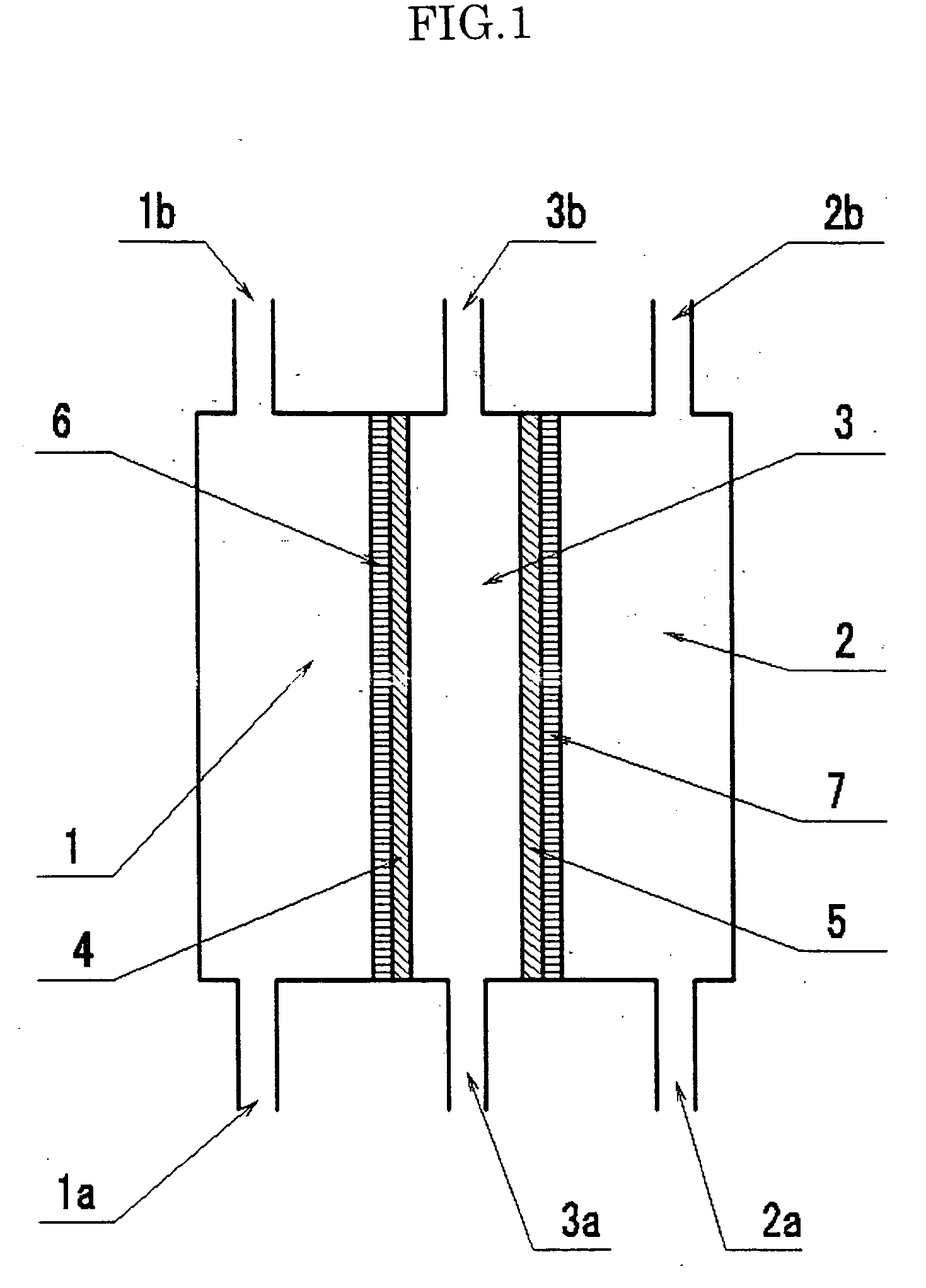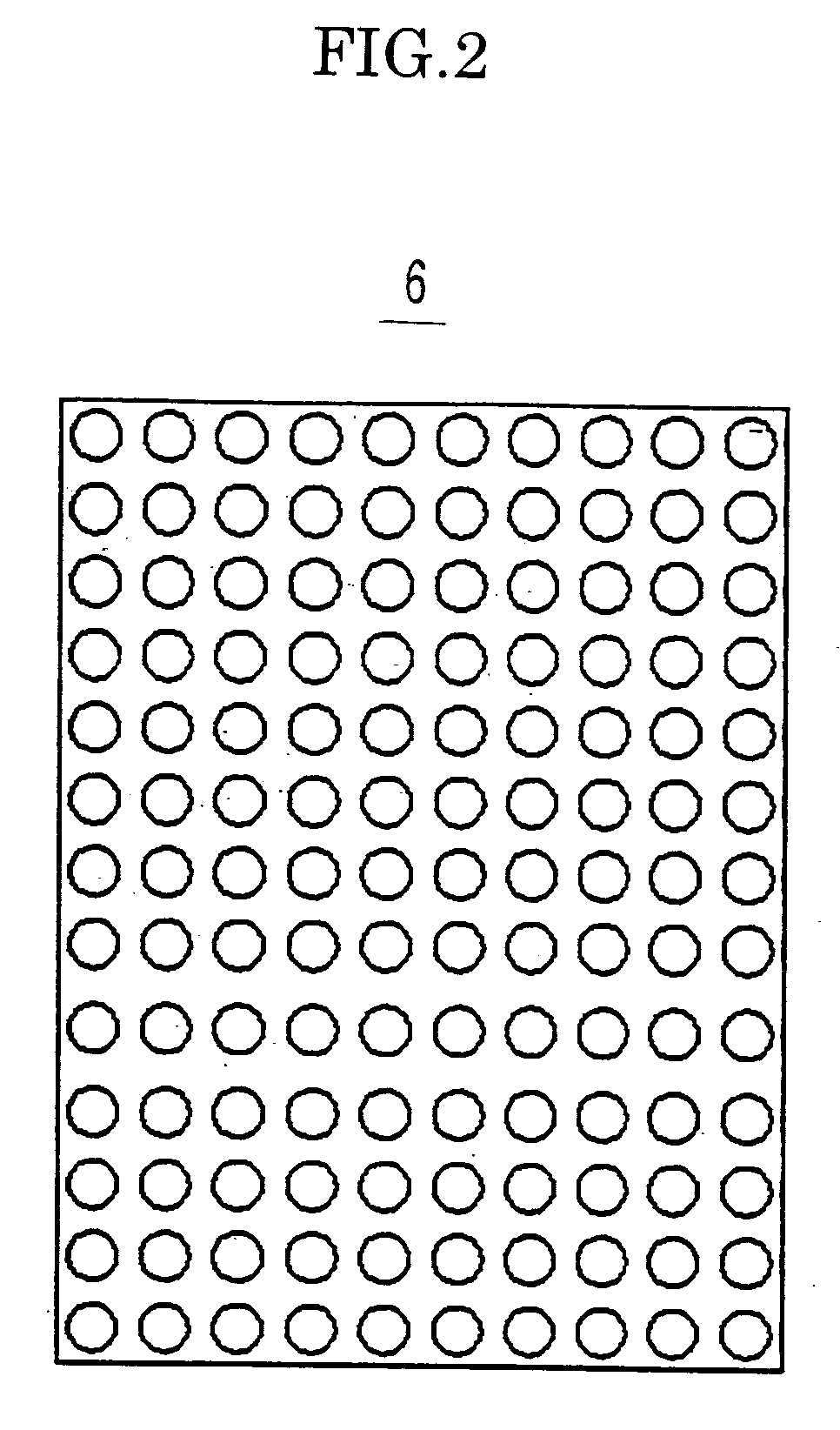Manufacturing method of oxidative water to be employed for sterilization
- Summary
- Abstract
- Description
- Claims
- Application Information
AI Technical Summary
Benefits of technology
Problems solved by technology
Method used
Image
Examples
experiment 1
[0158] The three-compartment cell composed of the anode compartment 1; the cathode compartment 2, and the middle compartment 3 shown in FIG. 1 was used to make an experiment. This type of cell becomes a public knowledge.
[0159] In this invention, the electrolysis device containing the three-compartment cell was developed as shown in FIG. 6. The device shown in FIG. 6 differs from the device shown in FIG. 3 in the pipe 15 connected between the outlet 2b of the cathode compartment and the pipe 13.
[0160] In this experiment, cathode water was distributed to the to the tank 12 by controlling the opening and closing of valve 16. So, controlling the opening and closing of the valve 16 can control the pH of mixture of anode water and cathode water in the tank 12.
[0161] In addition, the signal of pH sensor dipped in the tank 12 can control the opening and closing of the valve 16 and then the pH of mixture of anode water and cathode water in the tank 12. Thus mixing anode water with cathode...
experiment 2
[0167] Pure water is fed to the middle compartment 3 in place of saturated saline. When the glass beads are packed into the middle compartment 3, an electrolysis voltage is higher than 1000 volt. So, ion exchange resins are necessary to pack to the middle compartment 3 to reduce the electrolysis voltage. In this experiment, fluorinated cation exchange resins fabricated by Dupont (Nafion NR80) were packed to the middle compartment 3. The electrolysis voltage was reduced to 20 volt while the electrolysis current was kept at 10 ampere. In addition anion exchange resins or another cation exchange resins can be used to the middle compartment 3 and then the oxidative mixtures of pH 6 to 8 were produced.
[0168]FIG. 5 shows the disinfections (sterilization) effectiveness, pH, ORP, and concentrations of residual chlorine of oxidative mixed water with pH 6 to 8 produced in a similar way with the experiment 1.
TABLE 5the concentrationdiinfections orORPof residualsterilizationpH(mV)chlorine(pp...
experiment 3
[0171] In this experiment, a fluorinated non-woven cloth was used to cover the anode electrode and oxidative mixtures of anode water and cathode water with pH 4 to 8 were produced. FIG. 6 shows the pH, ORP, concentrations of residual chlorine, and disinfections (sterilization) effectiveness of the oxidative mixtures produce in a similar way with the experiment 1.
TABLE 6the concentrationdiinfections orORPof residualsterilizationpH(mV)chlorine(ppm)effectsmixture / 41045750oxidative water5985700692570078657008805650anode water2.54465800cathode water12.4−23501
[0172] Since ORP values of the mixture were higher than those in the experiment 1, high disinfections (sterilization) effectiveness are considered to be higher. The oxidative water produced by using the electrolysis device containing the anode electrode covered with non-woven cloth is preferable to disintections (sterilization).
PUM
| Property | Measurement | Unit |
|---|---|---|
| Acidity | aaaaa | aaaaa |
| Acidity | aaaaa | aaaaa |
| Fraction | aaaaa | aaaaa |
Abstract
Description
Claims
Application Information
 Login to View More
Login to View More - R&D
- Intellectual Property
- Life Sciences
- Materials
- Tech Scout
- Unparalleled Data Quality
- Higher Quality Content
- 60% Fewer Hallucinations
Browse by: Latest US Patents, China's latest patents, Technical Efficacy Thesaurus, Application Domain, Technology Topic, Popular Technical Reports.
© 2025 PatSnap. All rights reserved.Legal|Privacy policy|Modern Slavery Act Transparency Statement|Sitemap|About US| Contact US: help@patsnap.com



